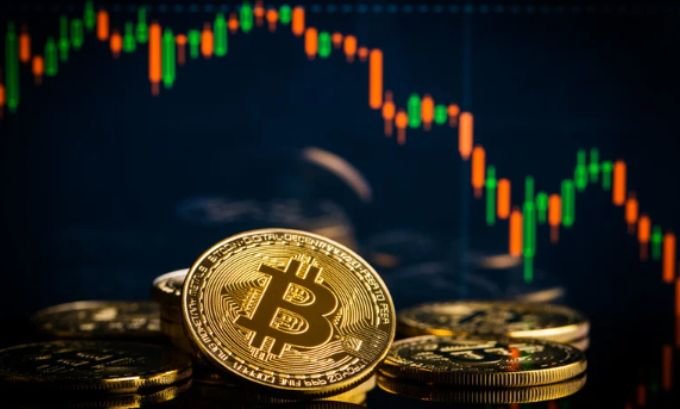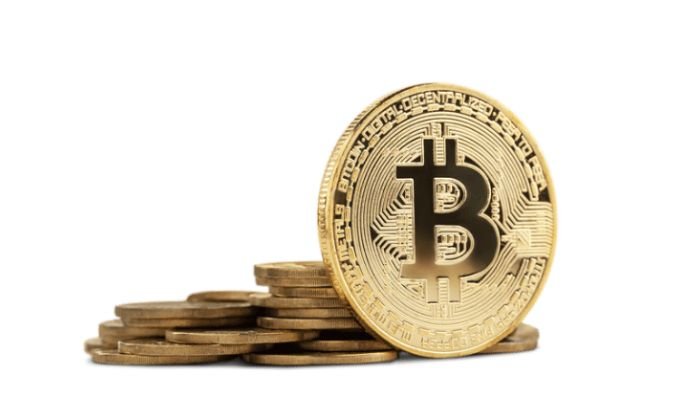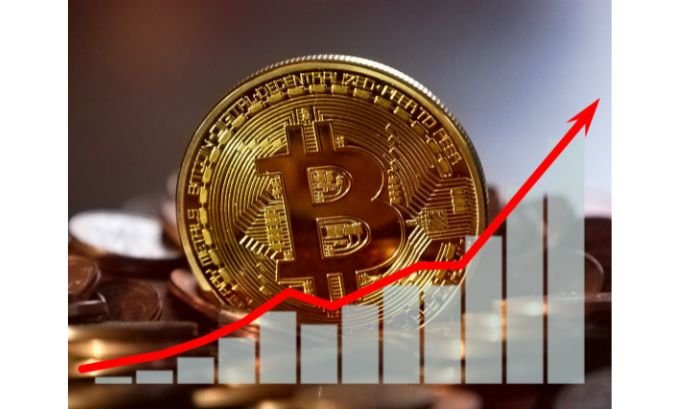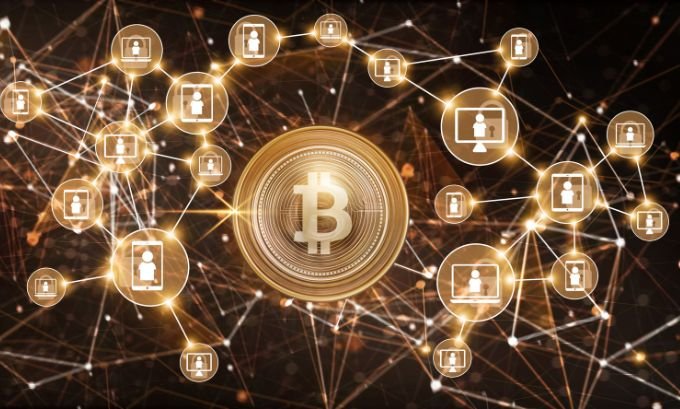Jumping into the world of Bitcoin (BTC) is an exciting prospect, but it’s wise to approach it with a clear head and a focus on security. Learning how to buy Bitcoin safely 2025 is less about technical wizardry and more about following a simple, proven framework. The most secure method involves using a trusted exchange for the purchase and then moving your new assets into a private wallet that only you control.
This guide will serve as your plain-language manual, breaking down the process from start to finish. We’ll cover the essentials of the Blockchain, compare different buying avenues, and offer real-world insights to help you invest with confidence. By the end, you’ll be equipped with the knowledge to make your first Bitcoin purchase securely.
Table of Contents
A Safe and Sound Strategy for Buying Bitcoin
To acquire Bitcoin without exposing yourself to unnecessary risks, you need a deliberate plan. It’s not about trying to outsmart the market; it’s about establishing a secure foundation for your investment from the very beginning. This means choosing the right tools, verifying your identity on a compliant platform, and taking full ownership of your digital assets.
Step 1: Understand the Asset You’re Buying
Before you commit any funds, it’s crucial to know what you’re investing in. Bitcoin (BTC) was introduced in a 2008 whitepaper by the still-anonymous person or group known as Satoshi Nakamoto. It’s a digital form of money that operates on a peer-to-peer network, free from the control of any single bank or government.
The technology that makes this possible is the Blockchain. Think of it as a universal, decentralized accounting ledger that is duplicated across thousands of computers worldwide. Each transaction is a new, permanent entry. Because this ledger is shared and cryptographically secured, it’s virtually impossible to alter or defraud. The network’s integrity is upheld through Bitcoin Mining, a process where powerful computers solve complex math problems to validate transactions, securing the network and earning newly minted Bitcoin as a reward.
Step 2: Choose Your Personal Digital Vault (A Crypto Wallet)
Your Cryptocurrency Wallet is the primary tool for managing your Bitcoin. It doesn’t hold your coins directly like a traditional wallet holds cash. Instead, it safeguards your private keys—the secret strings of data that prove ownership and authorize you to spend your funds.
Wallets are generally categorized into two types:
- Hot Wallets: These are software-based wallets that are connected to the internet, including mobile apps, desktop programs, and the wallets provided by exchanges. Their online status makes them convenient for frequent transactions but also more vulnerable to digital threats.
- Cold Wallets: These are offline hardware devices specifically designed for maximum security. Hardware wallets, which often resemble a small USB stick, keep your private keys completely isolated from the internet. This makes them the gold standard for securely storing your crypto long-term.
A common and prudent strategy is to use a hot wallet for small, active amounts of crypto and a cold wallet for the majority of your holdings.

Step 3: Select a Trustworthy Cryptocurrency Exchange
Cryptocurrency Exchanges are the online marketplaces where you can buy, sell, and trade digital assets. Your choice of exchange is a critical decision. Focus on platforms with a long track record, robust security features, regulatory compliance, and transparent fee structures.
One of the largest and most recognized platforms is Binance. Known for its deep liquidity and comprehensive security measures, including an insurance fund for user assets, it serves millions of users globally. While its full range of features can be extensive, the fundamental process of buying Bitcoin is designed to be accessible. Other respected exchanges include Kraken, Coinbase, and YouHodler.
Looking to spend your crypto gains wisely? Explore authentic Japanese snacks, groceries, and gifts at TokyoMart.store — Japan’s favorite online destination for food lovers.
Step 4: Create and Fortify Your Exchange Account
Once you’ve chosen an exchange, the next step is to create and secure your account.
- Sign Up: You’ll begin by providing an email address and creating a strong, unique password. Using a password manager to generate and store this is highly recommended.
- Enable Two-Factor Authentication (2FA): This is an essential security measure. 2FA requires a second code, usually from an authenticator app on your phone, to log in or make withdrawals. It’s a powerful defense against unauthorized access.
- Complete Identity Verification (KYC): Reputable exchanges are required by law to verify their customers’ identities. This “Know Your Customer” process typically involves submitting a photo of a government-issued ID. This is a vital step that helps prevent financial crime and keeps the platform secure for all users.
Step 5: Add Funds and Execute Your Purchase
With a verified account, you can deposit funds to start buying. Most exchanges offer a range of options:
- Bank transfer (ACH or wire)
- Debit or credit card
- Third-party payment platforms
Card payments are usually the fastest method but can come with higher fees. Bank transfers are often more economical but may take a few business days to clear. Once your account is funded, go to the “buy” or “trade” section, select BTC, and enter the amount you wish to purchase. You can either buy instantly at the current market rate or place a limit order to buy at a specific price you’ve set.
Step 6: The Final and Most Crucial Step—Withdraw to Self-Custody
This is the move that puts you in complete control. Leaving your coins on an exchange is convenient, but it means you are trusting that platform with your assets. For secure, long-term holding, it is imperative to withdraw your Bitcoin to a personal wallet that you and only you control.
This act of self-custody is the practical embodiment of Financial Freedom. To perform a withdrawal, you will navigate to the “Withdraw” section of the exchange, input the public address from your personal wallet, specify the amount, and confirm. Since blockchain transactions are irreversible, always double- and triple-check the address before confirming the transfer.

A Personal Anecdote: The Day I Became My Own Bank
My first Bitcoin purchase was made in a rush of excitement. I bought a small amount on an exchange and, like many newcomers, left it sitting there. I didn’t think much of it until I read a story about a different exchange getting hacked. It was a sobering moment that made the popular crypto phrase, “not your keys, not your coins,” hit home.
That was all the motivation I needed to order a hardware wallet. I spent an evening carefully setting it up, sending a small test amount first before moving the rest. The sense of security I felt, knowing my assets were offline and under my sole control, was a game-changer. It was the moment that the abstract vision of Satoshi Nakamoto became a practical reality for me. That experience also inspired me to start a Dollar-Cost Averaging (DCA) plan—a simple, automated weekly purchase that removed emotion and turned my investment into a disciplined long-term strategy.
If you are interested in buying Bitcoin, read more about how to buy bitcoin safely 2025 in mumbaitimes.net, techbullion.in, mindjournal.co or bangalorenews.net
The Bright Side: What Makes Bitcoin Compelling
- True Digital Ownership: When you control your private keys in a personal wallet, you have absolute sovereignty over your funds. This is the core of Financial Freedom.
- Open and Borderless: The Bitcoin network is accessible to anyone with an internet connection. It operates 24/7 without needing permission from any authority.
- Mathematical Scarcity: Bitcoin’s supply is capped at 21 million coins, a feature that makes it an attractive alternative to traditional currencies that can be devalued by inflation.
- Accessible Investing Strategies: You don’t need to be a professional trader. Simple methods like Dollar-Cost Averaging (DCA) offer a disciplined and low-stress way to build a position over time.
- Expanding Access Points: The continued rollout of physical Bitcoin ATMs provides another bridge between the traditional cash economy and the digital asset world.
The Hurdles: Where Bitcoin Still Needs to Evolve
- The Onboarding Process: For a complete beginner, the terminology and security practices can be overwhelming. The industry has made strides in user experience, but a learning curve still exists.
- The Finality of Transactions: The immutability of the blockchain is a key feature, but it means there are no do-overs. A simple mistake, like sending funds to the wrong address, can result in a permanent loss.
- Market Volatility: Bitcoin’s price is known for its significant swings. While this creates opportunity, it requires a long-term perspective and emotional resilience to handle the downturns.
- The Responsibility of Control: Being your own bank is empowering, but it also means you are solely responsible for your security. If you lose your wallet’s recovery phrase, there is no one to call for help.
A Comparative Look at Bitcoin Buying Methods
| Purchase Method | Typical Speed | Security Level | Common Fees | Level of Control | Best Suited For |
|---|---|---|---|---|---|
| Centralized Exchange | Minutes to Days | High (Platform trust) | Low to Medium | Custodial (initially) | Beginners, active traders |
| Peer-to-Peer Market | Variable | Medium (User diligence) | Low | Immediate | Privacy-focused users |
| Bitcoin ATM | Very Fast | High (Direct to wallet) | Very High | Immediate | Small, urgent cash buys |
| Directly via Wallet App | Fast | Highest | Medium | Immediate | Security-conscious investors |

Frequently Asked Questions (FAQ)
1. What’s the biggest security risk for a new Bitcoin owner?
The single biggest risk is leaving your Bitcoin on an exchange long-term. Exchanges can be hacked or can freeze withdrawals. The safest practice is to use a personal cryptocurrency wallet for storage.
2. Is a well-known exchange like Binance safe to use?
Yes, reputable platforms like Binance are generally secure for the purpose of buying and selling. They invest heavily in security. However, they should be viewed as a tool for transactions, not as a bank for your life savings.
3. Is it too late to get into Bitcoin?
While the days of turning a few dollars into millions are likely over, many experts believe Bitcoin’s adoption is still in its early phases. Its unique properties as a global, non-sovereign store of value suggest significant long-term potential. A DCA strategy is a sound way to gain exposure at any point.
4. How much do I need to start?
You can buy a very small fraction of a Bitcoin, called a satoshi. You can start with as little as $20 or $50. A wise approach is to only invest an amount that you are fully prepared to lose.
5. Are Bitcoin ATMs a good idea?
Bitcoin ATMs offer incredible convenience for quick, cash-based purchases and enhance security by sending coins directly to your wallet. However, this convenience comes at the cost of significantly higher fees compared to online exchanges.
6. Do I have to understand Bitcoin Mining to be an investor?
No, not at all. Bitcoin Mining is the industrial process that secures the network. As an investor, you don’t need to participate in or understand the deep technicals of mining to successfully buy, hold, and use Bitcoin.
7. How can I spot and avoid crypto scams?
Be highly suspicious of any person or platform promising guaranteed or unusually high returns. Never share your wallet’s recovery phrase (often 12 or 24 words). Always bookmark trusted websites and double-check URLs before entering credentials.
Your Next Steps
Learning how to buy Bitcoin safely in 2025 is an achievable goal built on a foundation of sound principles and security-conscious habits. By understanding the fundamentals, choosing your tools carefully, and making self-custody your end goal, you can confidently and securely join the digital economy.
The journey toward Financial Freedom in this new era is one of personal responsibility and education. The framework laid out here provides a durable and tested path to get you started.
Your next logical step is to research hardware wallets to find the one that best aligns with your security needs and budget.
Author Bio
Alex Rivera is a cryptocurrency analyst and educator with over eight years of experience in the digital asset space. After witnessing the potential of blockchain technology firsthand, Alex dedicated his career to making crypto accessible and understandable for everyone. He specializes in security best practices, investment strategies, and market analysis. When he’s not writing about crypto, Alex enjoys hiking and exploring the intersection of technology and finance.
References
- Nakamoto, S. (2008). Bitcoin: A Peer-to-Peer Electronic Cash System. Bitcoin.org.
- Binance. (2025). Our Commitment to Security.
- U.S. Federal Trade Commission. (2024). Spotting, Avoiding, and Reporting Crypto Scams.
- Investopedia. (2025). Dollar-Cost Averaging (DCA): What It Is, How It’s Used.

